Janet Scudder
The Frog Fountain
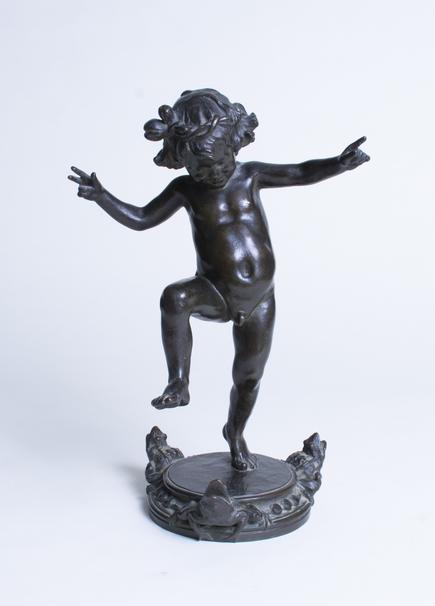
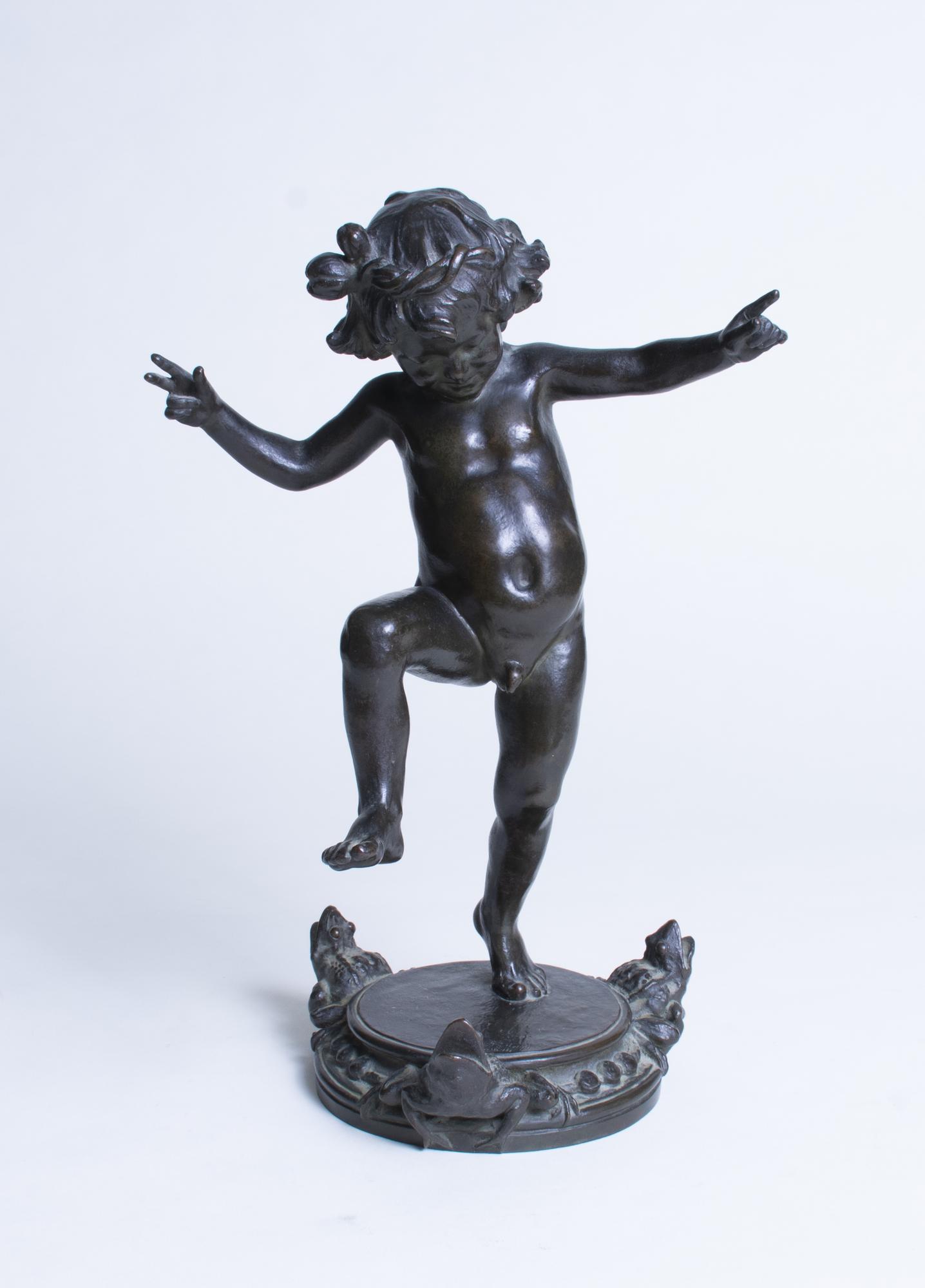
12 ½" high (31.75 cm)
This Frog Fountain is a reduction of a 37 1/2" version in the collection of The Metropolitan Museum of Art and is on view in the Charles Englehart Sculpture Court in its American Wing. The Frog Fountain earned Scudder acclaim after it was first purchased by Stanford White, the prominent American architect who was a partner in the architectural firm McKim, Mead & White. Scudder wrote a whole chapter on The Frog Fountain in her autobiography. This work marked the beginning of her success as a prominent sculptor of fountains. The inception of her design began when a little boy came to her Paris studio to pose. In recounting her inspiration she wrote in her autobiography: "In that moment a finished work flashed before me. I saw a little boy dancing, laughing, chuckling all to himself while a spray of water dashed over him. The idea of my Frog Fountain was born." American sculptor, Frederick William MacMonnies exclaimed that it was "Amusing." In reply Scudder confirmed her goal was to create amusing sculptures henceforth for gardens, courtyards, and terraces.
Signed on the rim of the base.
Literature:
Albert TenEyck Gardener, American Sculpture The Metropolitan Museum of Art. New York: The Metropolitan Museum of Art, (1965), p. 114
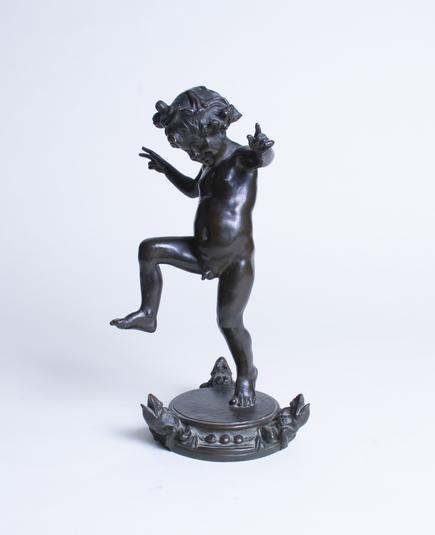
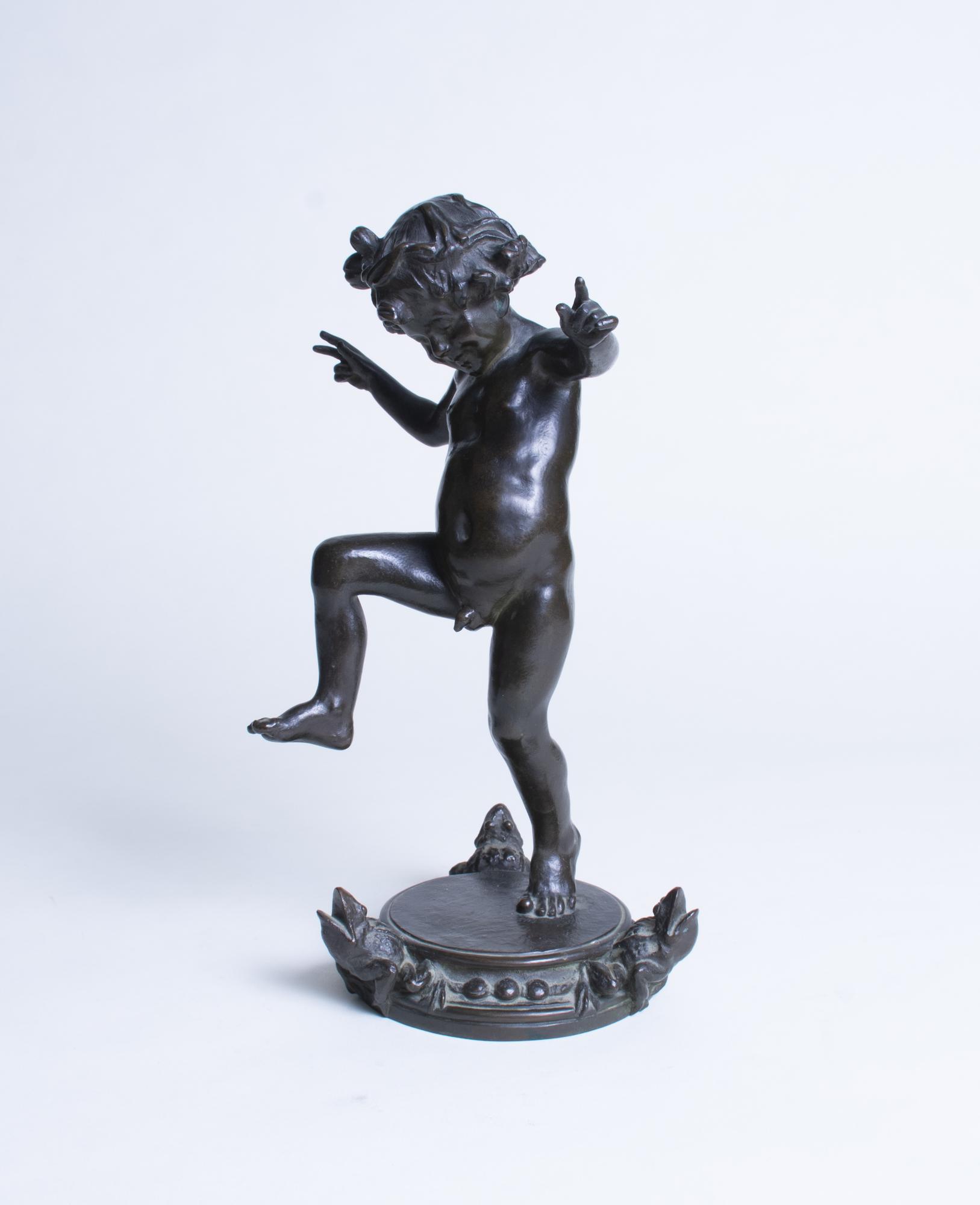
12 ½" high (31.75 cm)
This Frog Fountain is a reduction of a 37 1/2" version in the collection of The Metropolitan Museum of Art and is on view in the Charles Englehart Sculpture Court in its American Wing. The Frog Fountain earned Scudder acclaim after it was first purchased by Stanford White, the prominent American architect who was a partner in the architectural firm McKim, Mead & White. Scudder wrote a whole chapter on The Frog Fountain in her autobiography. This work marked the beginning of her success as a prominent sculptor of fountains. The inception of her design began when a little boy came to her Paris studio to pose. In recounting her inspiration she wrote in her autobiography: "In that moment a finished work flashed before me. I saw a little boy dancing, laughing, chuckling all to himself while a spray of water dashed over him. The idea of my Frog Fountain was born." American sculptor, Frederick William MacMonnies exclaimed that it was "Amusing." In reply Scudder confirmed her goal was to create amusing sculptures henceforth for gardens, courtyards, and terraces.
Signed on the rim of the base.
Literature:
Albert TenEyck Gardener, American Sculpture The Metropolitan Museum of Art. New York: The Metropolitan Museum of Art, (1965), p. 114
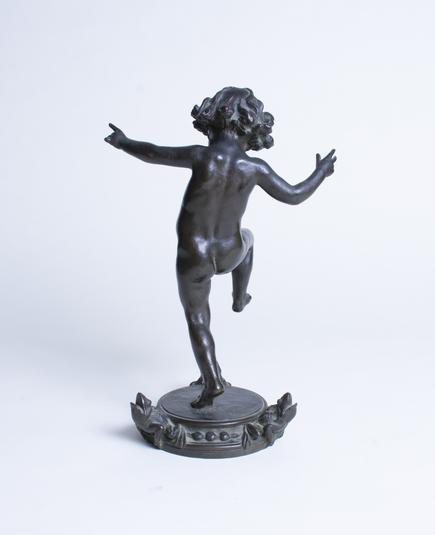
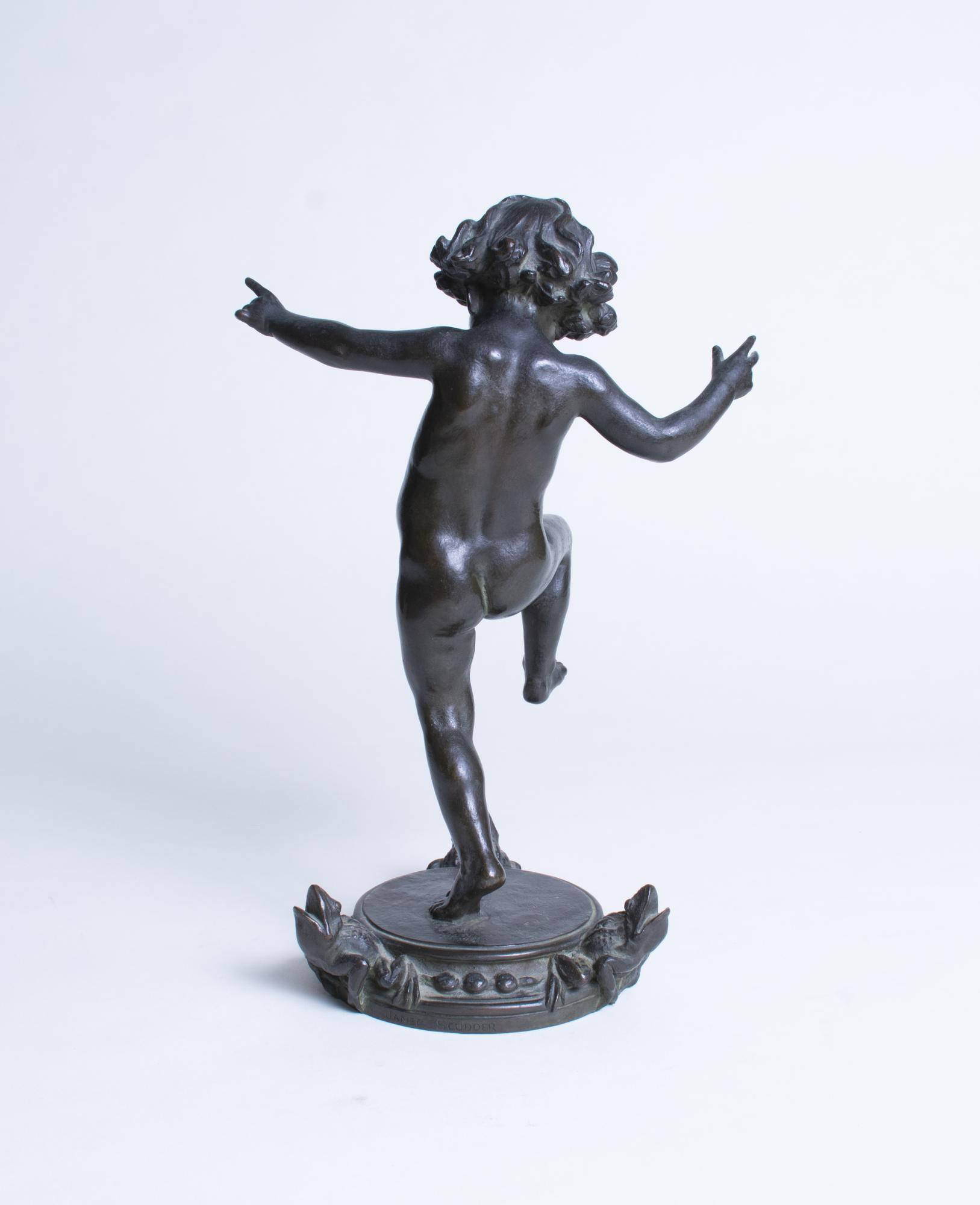
12 ½" high (31.75 cm)
This Frog Fountain is a reduction of a 37 1/2" version in the collection of The Metropolitan Museum of Art and is on view in the Charles Englehart Sculpture Court in its American Wing. The Frog Fountain earned Scudder acclaim after it was first purchased by Stanford White, the prominent American architect who was a partner in the architectural firm McKim, Mead & White. Scudder wrote a whole chapter on The Frog Fountain in her autobiography. This work marked the beginning of her success as a prominent sculptor of fountains. The inception of her design began when a little boy came to her Paris studio to pose. In recounting her inspiration she wrote in her autobiography: "In that moment a finished work flashed before me. I saw a little boy dancing, laughing, chuckling all to himself while a spray of water dashed over him. The idea of my Frog Fountain was born." American sculptor, Frederick William MacMonnies exclaimed that it was "Amusing." In reply Scudder confirmed her goal was to create amusing sculptures henceforth for gardens, courtyards, and terraces.
Signed on the rim of the base.
Literature:
Albert TenEyck Gardener, American Sculpture The Metropolitan Museum of Art. New York: The Metropolitan Museum of Art, (1965), p. 114
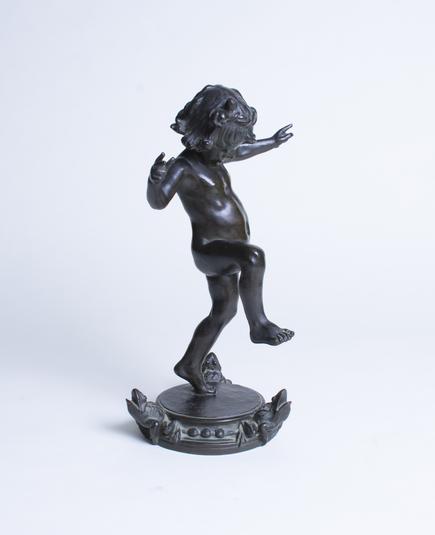
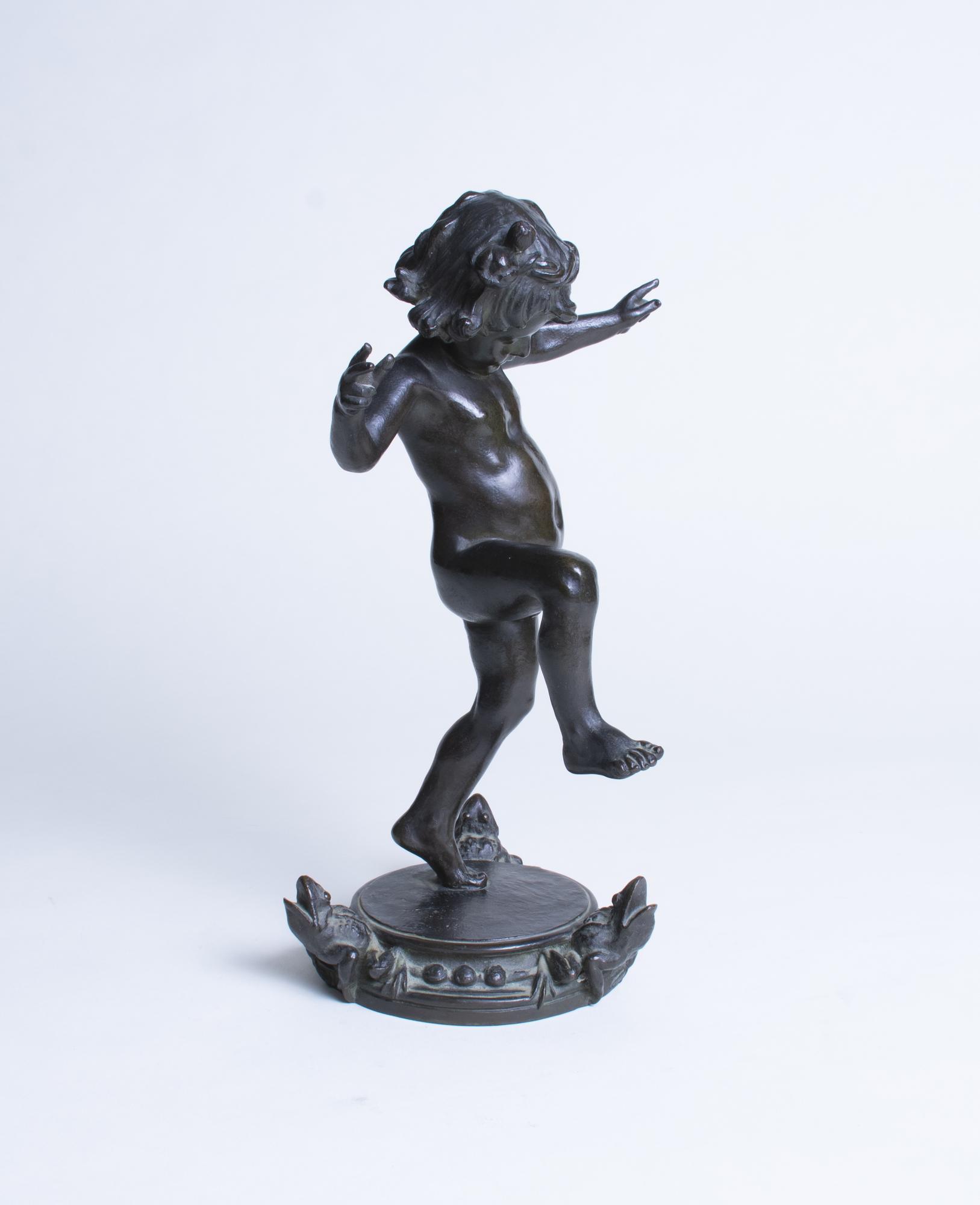
12 ½" high (31.75 cm)
This Frog Fountain is a reduction of a 37 1/2" version in the collection of The Metropolitan Museum of Art and is on view in the Charles Englehart Sculpture Court in its American Wing. The Frog Fountain earned Scudder acclaim after it was first purchased by Stanford White, the prominent American architect who was a partner in the architectural firm McKim, Mead & White. Scudder wrote a whole chapter on The Frog Fountain in her autobiography. This work marked the beginning of her success as a prominent sculptor of fountains. The inception of her design began when a little boy came to her Paris studio to pose. In recounting her inspiration she wrote in her autobiography: "In that moment a finished work flashed before me. I saw a little boy dancing, laughing, chuckling all to himself while a spray of water dashed over him. The idea of my Frog Fountain was born." American sculptor, Frederick William MacMonnies exclaimed that it was "Amusing." In reply Scudder confirmed her goal was to create amusing sculptures henceforth for gardens, courtyards, and terraces.
Signed on the rim of the base.
Literature:
Albert TenEyck Gardener, American Sculpture The Metropolitan Museum of Art. New York: The Metropolitan Museum of Art, (1965), p. 114
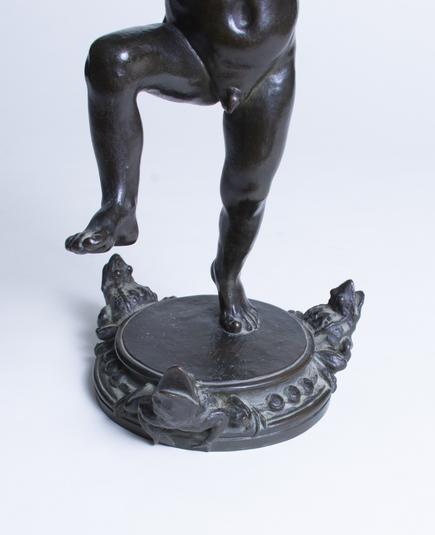
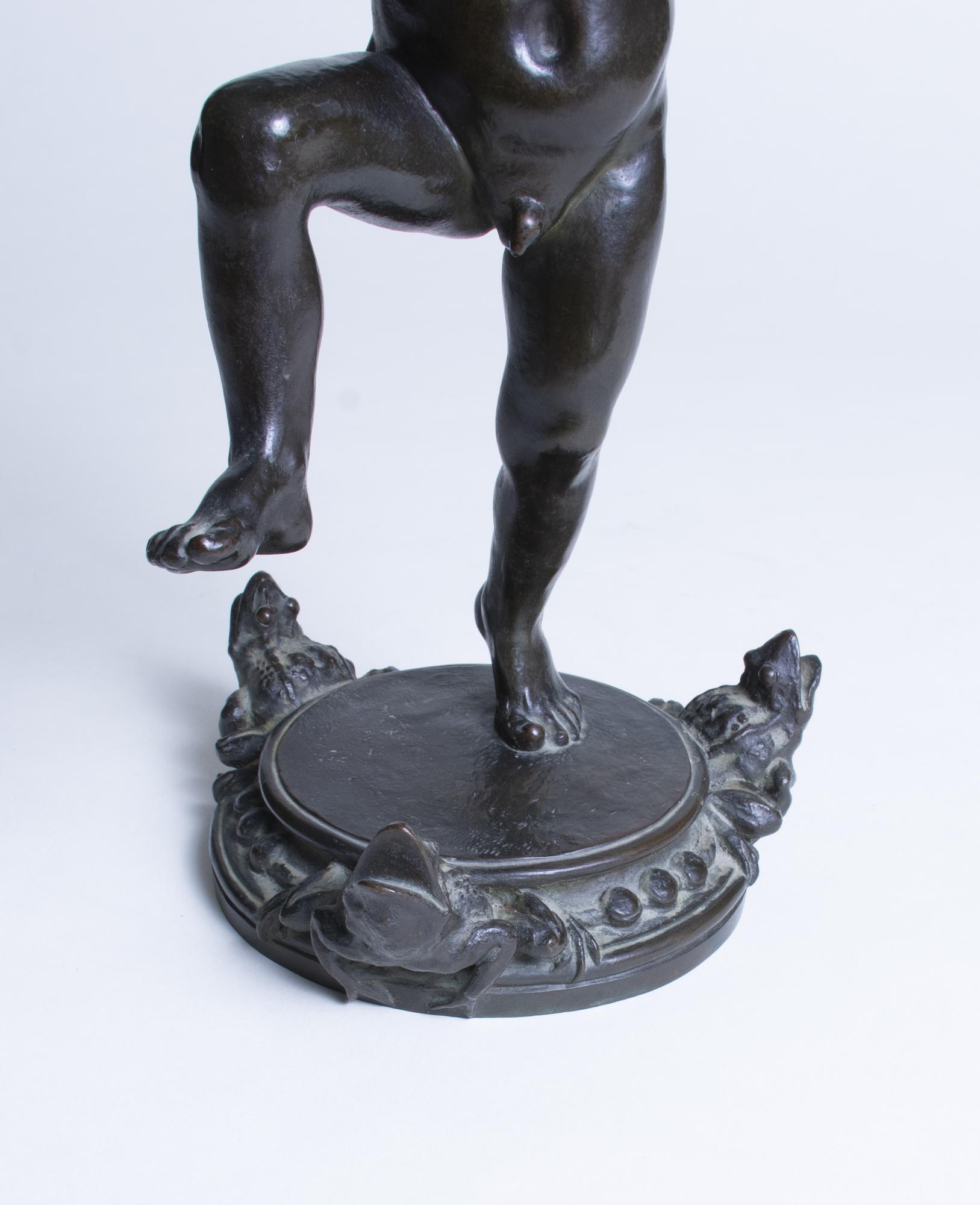
12 ½" high (31.75 cm)
This Frog Fountain is a reduction of a 37 1/2" version in the collection of The Metropolitan Museum of Art and is on view in the Charles Englehart Sculpture Court in its American Wing. The Frog Fountain earned Scudder acclaim after it was first purchased by Stanford White, the prominent American architect who was a partner in the architectural firm McKim, Mead & White. Scudder wrote a whole chapter on The Frog Fountain in her autobiography. This work marked the beginning of her success as a prominent sculptor of fountains. The inception of her design began when a little boy came to her Paris studio to pose. In recounting her inspiration she wrote in her autobiography: "In that moment a finished work flashed before me. I saw a little boy dancing, laughing, chuckling all to himself while a spray of water dashed over him. The idea of my Frog Fountain was born." American sculptor, Frederick William MacMonnies exclaimed that it was "Amusing." In reply Scudder confirmed her goal was to create amusing sculptures henceforth for gardens, courtyards, and terraces.
Signed on the rim of the base.
Literature:
Albert TenEyck Gardener, American Sculpture The Metropolitan Museum of Art. New York: The Metropolitan Museum of Art, (1965), p. 114
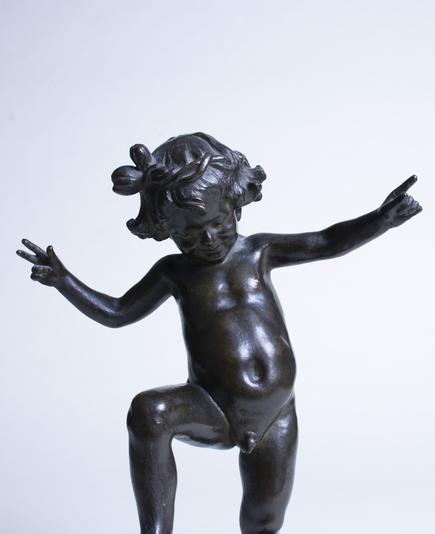

12 ½" high (31.75 cm)
This Frog Fountain is a reduction of a 37 1/2" version in the collection of The Metropolitan Museum of Art and is on view in the Charles Englehart Sculpture Court in its American Wing. The Frog Fountain earned Scudder acclaim after it was first purchased by Stanford White, the prominent American architect who was a partner in the architectural firm McKim, Mead & White. Scudder wrote a whole chapter on The Frog Fountain in her autobiography. This work marked the beginning of her success as a prominent sculptor of fountains. The inception of her design began when a little boy came to her Paris studio to pose. In recounting her inspiration she wrote in her autobiography: "In that moment a finished work flashed before me. I saw a little boy dancing, laughing, chuckling all to himself while a spray of water dashed over him. The idea of my Frog Fountain was born." American sculptor, Frederick William MacMonnies exclaimed that it was "Amusing." In reply Scudder confirmed her goal was to create amusing sculptures henceforth for gardens, courtyards, and terraces.
Signed on the rim of the base.
Literature:
Albert TenEyck Gardener, American Sculpture The Metropolitan Museum of Art. New York: The Metropolitan Museum of Art, (1965), p. 114
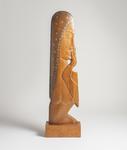 Robert Laurent
Robert Laurent 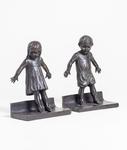 Abastenia St. Leger Eberle
Abastenia St. Leger Eberle 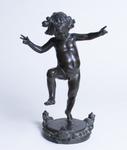 Janet Scudder
Janet Scudder 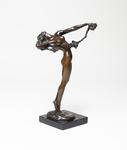 Harriet Frishmuth
Harriet Frishmuth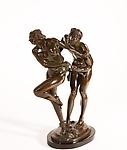 Harriet Frishmuth
Harriet Frishmuth